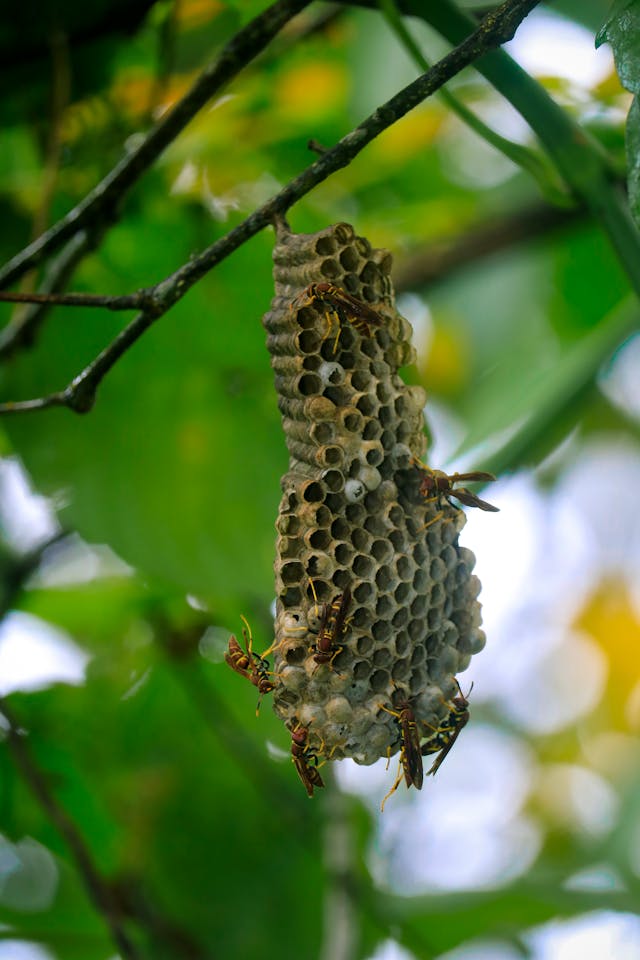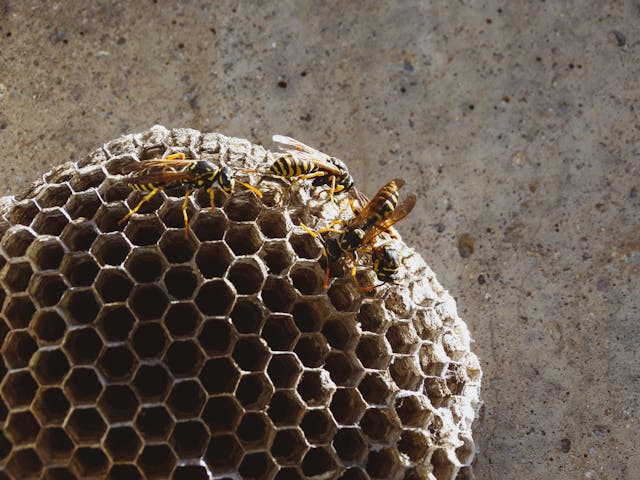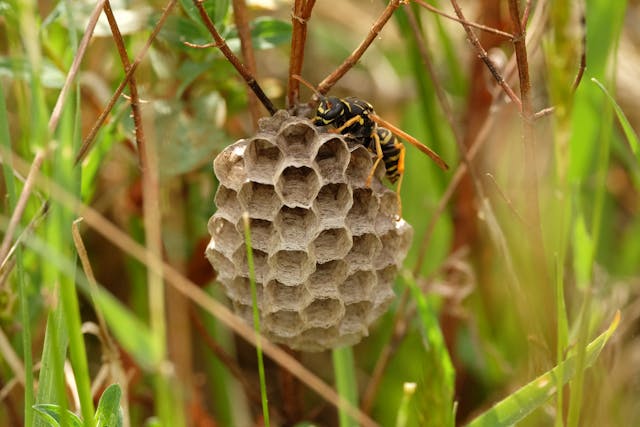Yellow jackets are among the most aggressive stinging insects, and when they feel threatened, they won’t hesitate to defend their nest. Unlike bees, which can only sting once, yellow jackets can sting multiple times, making an encounter with them particularly dangerous.
Knowing how to react is essential if you’ve already been stung or are looking to avoid a yellow jacket attack altogether. Here’s how to stay safe during an attack, what to do afterward, and how to reduce your chances of getting stung in the first place.
What to Do During a Yellow Jacket Attack
Yellow jacket attacks often happen suddenly, with little warning. If you accidentally disturb a nest, you could find yourself swarmed in seconds. Your immediate response can mean the difference between a few stings and a severe reaction.
- Move away quickly: Do not swat or flail your arms, as this can agitate them further. Instead, run in a straight line away from the nest. Yellow jackets are fast but will usually stop chasing once you’re far enough from their territory.
- Seek shelter: Get indoors or into a car as soon as possible. Yellow jackets will not follow you into a dark, enclosed space for long.
- Cover your face: These wasps often target the head and neck, so use a jacket, shirt, or your hands to shield your face while escaping.
- Avoid jumping into the water: Contrary to popular belief, diving into a lake or pool won’t help. Yellow jackets may wait for you to resurface and continue stinging.
If you or someone else is attacked by a large number of yellow jackets, the situation can quickly turn dangerous. Multiple stings increase the risk of a severe allergic reaction, so acting fast and removing yourself from the threat is important.
What to Do After a Yellow Jacket Attack

Once you’ve escaped, your focus should be on minimizing the effects of the stings and monitoring for allergic reactions. Here’s what you should do immediately after a yellow jacket attack:
- Take a look at the stings: Unlike honeybees, yellow jackets won’t typically leave their stingers behind. However, they can sting multiple times, so inspect the affected area for signs of swelling or excessive redness.
- Clean the stings: Wash the area with soap and water to reduce the risk of infection.
- Apply a cold compress: Use ice or a cold pack to reduce swelling and numb the pain. Hold it against the stings for 10-15 minutes at a time.
- Take antihistamines or pain relievers: Over-the-counter medications like Benadryl, ibuprofen, or acetaminophen can help reduce swelling and discomfort.
- Watch for allergic reactions: Symptoms such as difficulty breathing, swelling of the throat or tongue, dizziness, or nausea could indicate anaphylaxis, a life-threatening allergic reaction. If you or someone else experiences these symptoms, seek emergency medical attention immediately.
Even if you don’t have a severe reaction, yellow jacket stings can remain painful and swollen for several days. Keeping the area clean and applying anti-itch creams or hydrocortisone can help speed up recovery.
How to Prevent Yellow Jacket Stings

While it’s impossible to eliminate all risks of encountering yellow jackets, you can take steps to minimize your chances of being stung.
- Avoid known nesting areas: Yellow jackets often build nests underground, in tree stumps, or under decks and eaves. Be cautious in places where they are likely to be active, especially in late summer and early fall when they become more aggressive.
- Cover food and drinks: Yellow jackets are highly attracted to sugary foods and beverages. Keep food sealed during outdoor gatherings, and check drink cans before taking a sip.
- Wear neutral colors and avoid floral prints: Bright colors and floral patterns can attract yellow jackets, mistaking you for a food source. Stick to light, neutral-colored clothing.
- Stay calm if a yellow jacket lands on you: Swatting at a yellow jacket can trigger an attack. If one lands on you, remain still and allow it to fly away on its own.
- Keep trash bins sealed: Open garbage cans are a significant attractant. Use lids that seal tightly and empty them regularly.
- Limit strong fragrances: Perfumes, lotions, and scented shampoos can attract yellow jackets. Opt for unscented personal care products if you’ll be spending time outdoors.
If you notice an increase in yellow jacket activity around your home, a nest may be nearby. Attempting to remove a nest on your own is highly dangerous, as disturbing it can provoke a yellow jacket attack. Get in touch with a professional to tackle dangerous infestations like these.
Professional Yellow Jacket Control in Simpsonville, SC

Yellow jackets can turn any outdoor space into a dangerous zone, especially when their nests are hidden in high-traffic areas. If you’ve had a yellow jacket attack on your property or suspect there’s a nest nearby, professional removal is the safest solution.
At Action Pest Services, we specialize in the safe and effective removal of yellow jacket nests, reducing the risk of stings and attacks. Our experienced technicians use industry-approved methods to eliminate yellow jackets without triggering aggressive swarming behavior.
Don’t put yourself at risk by handling a nest on your own. Contact Action Pest Services today for professional yellow jacket control in Simpsonville, SC, and confidently reclaim your outdoor space!
